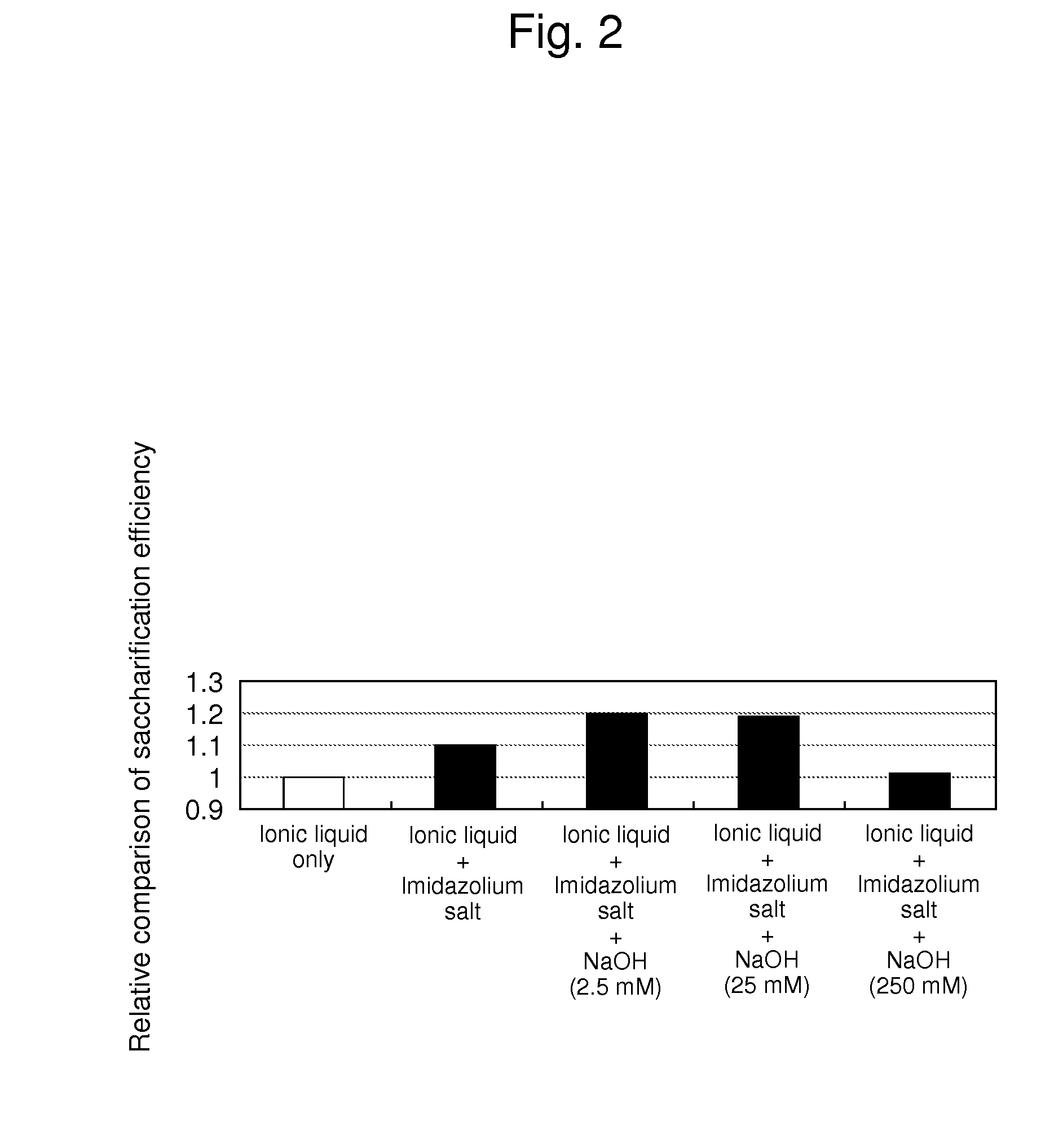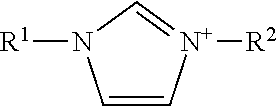Method for treatment of cellulosic biomass and method for production of sugar, alcohol, or organic acid from cellulosic biomass
a cellulosic biomass and cellulosic acid technology, applied in the field of cellulosic biomass treatment and cellulosic biomass production methods, can solve the problem of inability to improve the final saccharification efficiency, and achieve the effect of improving the saccharification efficiency and efficiently producing
- Summary
- Abstract
- Description
- Claims
- Application Information
AI Technical Summary
Benefits of technology
Problems solved by technology
Method used
Image
Examples
example 1
[0046]In this example, 1-butyl-3-methylimidazolium acetate (hereafter referred to as “[Bmim][Ac],” Solbionic) was used as ionic liquid. The structural formula representing such ionic liquid is shown below.
[0047][Bmim][Ac] (1.0 g) was collected in a vial, and sodium hydroxide was added thereto so as to prepare a solution used for soaking cellulosic biomass therein. In this example, solutions having sodium hydroxide concentration of 2.5 mM, 25 mM, and 250 mM were prepared.
[0048]In this example, eucalyptus powder crushed with the use of a cutter mill (average particle diameter: 150 mm) was used as the cellulosic biomass. In this example, 50 mg of eucalyptus powder was added to the solution prepared in the manner described above. Thereafter, cellulosic biomass was soaked in the solution and allowed to stand therein at 120 degrees C. for 30 minutes. The resultant was then washed with 9 ml of sterilized water and, with the use of a filter, cellulosic biomass was washed several times with ...
example 2
[0053]In this example, cellulosic biomass was treated in the same manner as in Example 1, except that 1 mg of 1,3-bis(2,6-diisopropylphenyl)imidazolium chloride was added as “an imidazolium salt having a melting point of 100 degrees C. or higher” to the solution used for soaking cellulosic biomass therein. Thereafter, the resultant was subjected to saccharification. The structural formula of 1,3-bis(2,6-diisopropylphenyl)imidazolium chloride is shown below.
[0054]FIG. 2 shows the determined glucose conversion efficiency. In comparison with the results of Example 1 shown in FIG. 1, the glucose conversion efficiency after saccharification is further improved with the addition of “an imidazolium salt having a melting point of 100 degrees C. or higher,” in addition to an alkali of given concentration to ionic liquid.
PUM
| Property | Measurement | Unit |
|---|---|---|
| particle diameter | aaaaa | aaaaa |
| pH | aaaaa | aaaaa |
| melting point | aaaaa | aaaaa |
Abstract
Description
Claims
Application Information
 Login to View More
Login to View More - R&D
- Intellectual Property
- Life Sciences
- Materials
- Tech Scout
- Unparalleled Data Quality
- Higher Quality Content
- 60% Fewer Hallucinations
Browse by: Latest US Patents, China's latest patents, Technical Efficacy Thesaurus, Application Domain, Technology Topic, Popular Technical Reports.
© 2025 PatSnap. All rights reserved.Legal|Privacy policy|Modern Slavery Act Transparency Statement|Sitemap|About US| Contact US: help@patsnap.com



